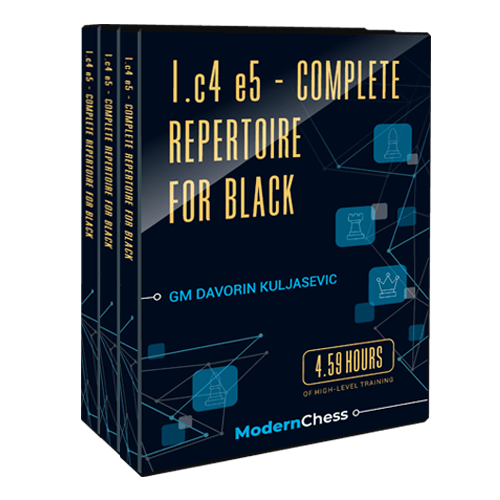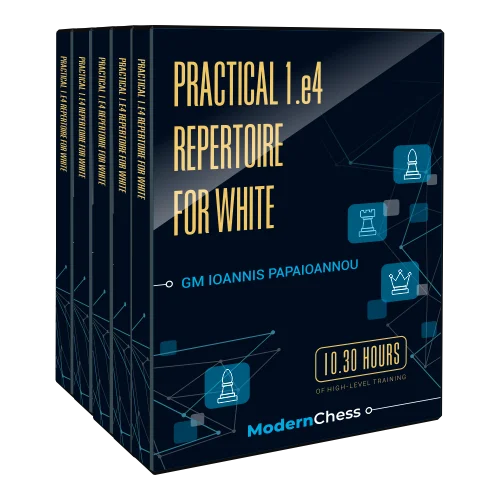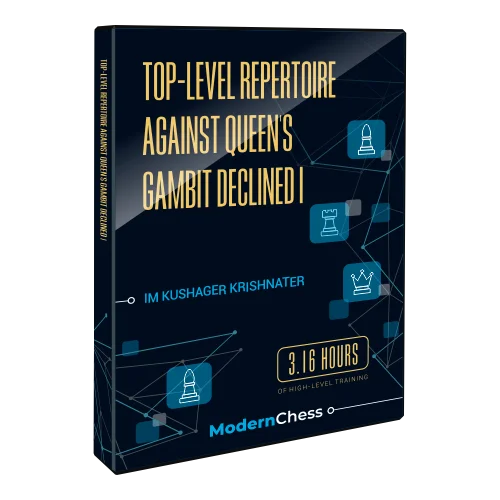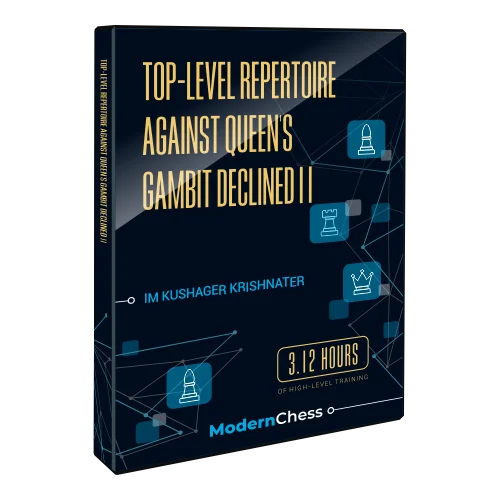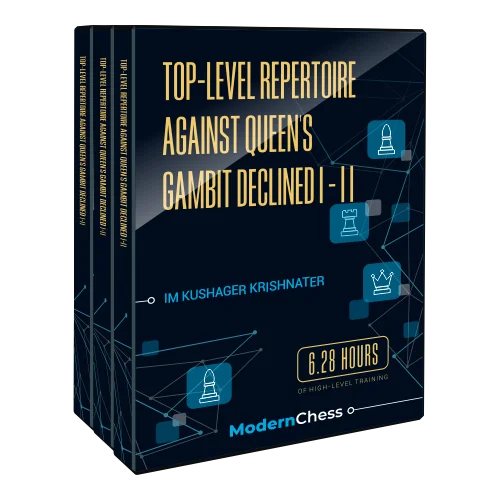Usually, the choice of defense against the English opening largely depends on what we play with Black against 1.d4 and, to a smaller degree, against 1.Nf3 and 1.e4. For example, a QGD player will seriously consider answering 1.c4 with 1...e6, while a Slav/Caro Kann one is likely to respond with 1...c6, etc. However, Black can use a completely different logic when approaching the question: What to play against 1.c4? We can choose an independent system with black pieces, almost regardless of what our repertoire is against the other first moves.
Usually, the choice of defense against the English opening largely depends on what we play with Black against 1.d4 and, to a smaller degree, against 1.Nf3 and 1.e4. For example, a QGD player will seriously consider answering 1.c4 with 1…e6, while a Slav/Caro Kann one is likely to respond with 1…c6, etc. However, Black can use a completely different logic when approaching the question: ”What to play against 1.c4?” We can choose an independent system with black pieces, almost regardless of what our repertoire is against the other first moves. And, in that case, the most natural reply to 1.c4 is 1…e5.
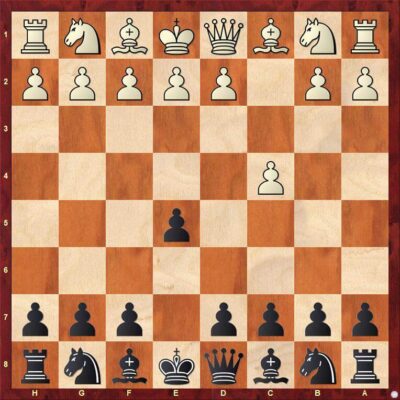
Truth be told, it is helpful to have some prior knowledge on either side of the Sicilian Defense when playing like this since now we have the Sicilian Defence reversed on the board. Black becomes a 1.e4 player who is down a tempo, while White is a Sicilian Defence player who is up a tempo. As you will see in this database, this can lead to some very interesting opening subtleties. At this introductory point, suffice it to say that Black can virtually always make useful adjustments to neutralize White’s extra tempo.
However, even if you haven’t had any prior Sicilian defense experience, don’t worry – in the chapters that follow, I will explain how to play these types of positions properly. My goal is to present a repertoire that is based on the ”open Sicilian” approach. In other words, Black will aim to play …d7-d5 at every reasonable opportunity.
On a side note, Black has a wide variety of other, often strategically more complex, systems in the reversed Sicilian: …Bb4, …Bc5, …c6, and …g6, just to mention a few of the most popular ones. The primary reason why I chose the system based on …d7-d5 is that it offers, in my view, the most active and natural play to Black, in the same way, d2-d4 does to White in the Sicilian Defence. Oh, and I have also played it as Black for about a decade.
The database consists of 13 theoretical chapters, 13 interactive test positions, a Memory Booster, and Video Version.
So, let us go over the ‘skeleton’ of this repertoire here in the introduction, and then we will study it in more detail in the 13 chapters that follow.
In this position, White’s main move is 2.Nc3.
The main alternative is 2.g3 which leads into reversed Dragon Sicilian positions after 2…Nf6 3.Bg2 d5 4.cxd5 Nxd5 5.Nc3.
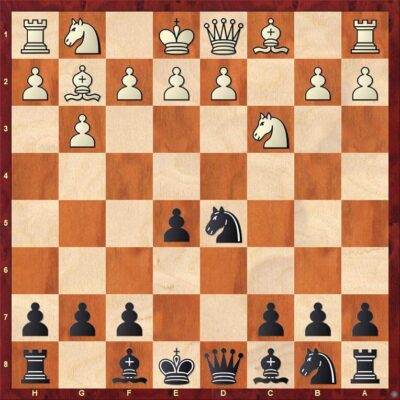
White also sometimes employs the move order without Nc3: 5.Nf3 Nc6 6.0-0 when I would suggest that we play a prophylactic 6…Nb6.
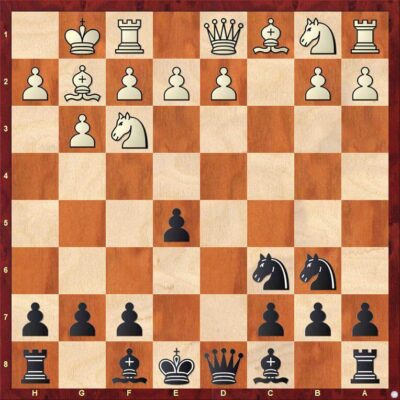
In Chapter 5, we study White’s two main options (besides 7.Nc3) in this position: 7.b3 (and 7.d3 Be7 8.Nbd2) 7…Be6 8.Bb2 f6.
In this line, Black prepares to castle queenside and obtain a sharp position. This plan was used successfully by Ian Nepomniachtchi and Hikaru Nakamura recently.
Let’s get back to the position arising after 5.Nc3 Nb6.
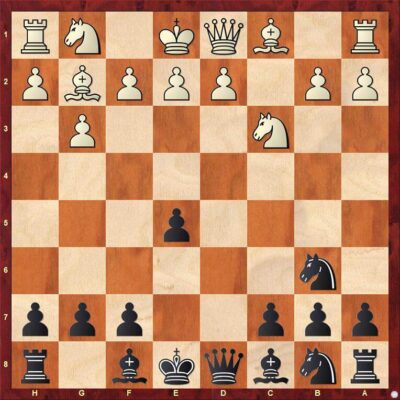
This is an important crossroads. By far, White’s main move is 6.Nf3.
In Chapter 4, we analyze two interesting sidelines 6.e3 and 6.d3. and 6.d3. In the case of the former, Black can try to take advantage of the knight’s absence from the usual f3-square with the ambitious plan: 6…Nc6 7.Nge2 h5!?
The move 6.d3 on the other hand, is a rather subtle positional line, delaying the knight’s development to f3 in order to discourage Black’s …Nc6 (which would lead to a big structural concession after Bxc6 bxc6). However, Black has enough useful moves in the ensuing standoff.
After 6.Nf3, my mainline goes 6…Nc6 7.0-0 Be7.
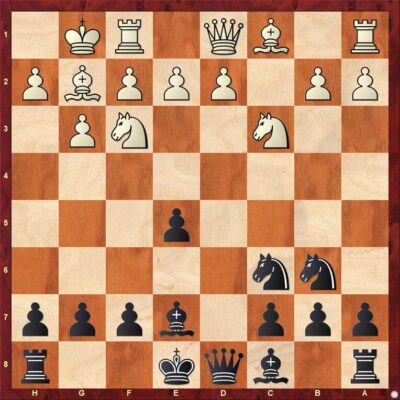
In this position of the reversed Dragon, White has several plans. Not surprisingly, virtually all of them are focused on developing an initiative on the queenside. Meanwhile, Black typically tries to solidify his pawn on e5 and play …Nd4 under the right circumstances.
White’s usual continuation is 8.d3.
In Chapter 2, we study another popular tabiya that arises after 8.a3 0-0 9.b4 Re8 10.d3 Bf8.
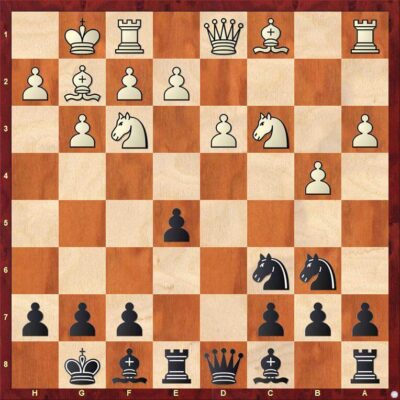
In this database, I suggest that we play like this. I slightly prefer this plan over 9…f6, 10…Be6 one, although this is largely a matter of taste as both approaches are fine for Black. What I like about this setup the most is that the rook is often very useful on the e-file if it opens up after Nd4, N(B)xd4, exd4. Additionally, we protect the e-pawn with a piece rather than the f-pawn, which means that our kingside pawn shield remains intact. When we play …f6, it is not unusual to experience some issues with the weakened light squares around the king later in the game.
In Chapter 3, we examine sidelines, such as 8.Rb1, 8.b3 and a few others. Studying this chapter will help you complete your understanding of the reversed Dragon-type of position. For example, after 8.Rb1 a5 9.d3 0-0 10.Be3 Be6 is a more effective way to complete development than 10…Re8, my standard recommendation in most of the other similar positions.
After 8.d3, the mainline goes 8…0-0 9.Be3.
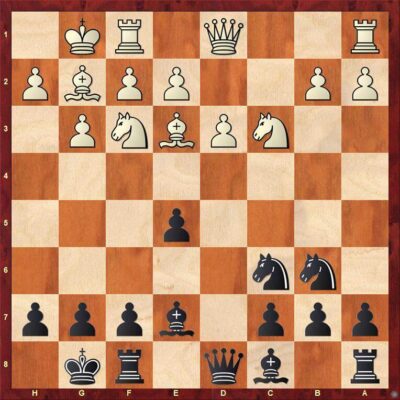
White typically proceeds with Rc1 and Ne4-c5, eyeing black’s potentially vulnerable pawns on b7 and c7. Meanwhile, I believe that Black is doing well if he employs the following plan: 9…Re8 10.Rc1 Bf8 11.Ne4 Nd4 when he gets a central outpost on d4.
In the final chapter (13), we take a look at White’s rare options on move two. White postpones or even omits Nc3 in order to get a reversed version of one of Najdorf, Scheveningen, Paulsen Kan, or Rubinstein variations, as we can see in the lines that follow:
2.d3 Nf6 3.Nf3 Nc6 4.a3 d5 5.cxd5 Nxd5 6.e4 is the Najdorf approach while 6.e3 is the Scheveningen approach. In both cases, Black has a reasonable choice of good plans.
2.e3 Nf6 3.a3 d5 4.cxd5 Nxd5 5.Nf3 Bd6 is pretty much a transposition into the Paulsen Kan with reversed colors.
The move 2.Nf3 is an increasingly popular attempt to reach the Rubinstein variation of the Sicilian.
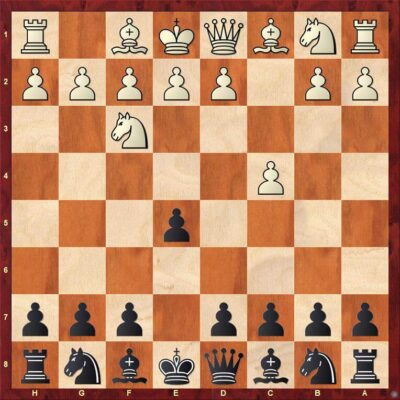
In Chapter 13, we examine 2…e4 3.Nd4 Nc6 4.e3 Nf6 5.Nc3 Bb4 which is one of several good ways to meet this rare line.
Finally, there is 2.b3 Nf6 3.Bb2 Nc6 4.e3.
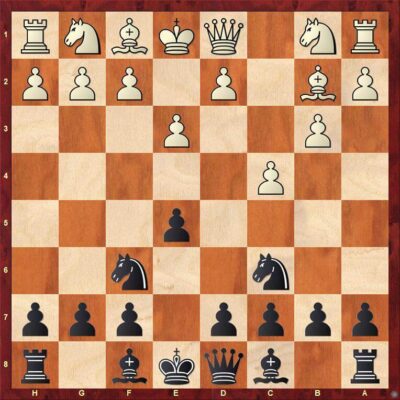
Interestingly enough, this position can also arise from 1.b3 e5 move order. As usual, Black plays 4…d5 5.cxd5 Nxd5 and gets a pleasant position out of the opening.
Overall, none of these variations is particularly theoretically demanding for Black, but it is important to be aware of them and to know how to react to them.
After 2.Nc3 Nf6 we reach another important crossroads.
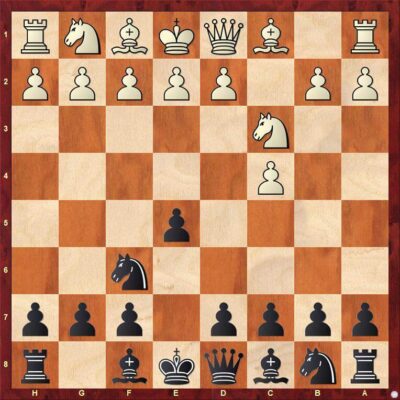
White’s most popular continuation is 3.Nf3.
In Chapter 12, we take a look at 3.e3 Nc6 when White has many alternatives to the most common move 4.Nf3. The most notable ones are 4.a3, 4.g4!?, and 4.Qb3. In all these lines, Black gets decent positions.
After 3.Nf3, my suggestion is 3…Nc6.
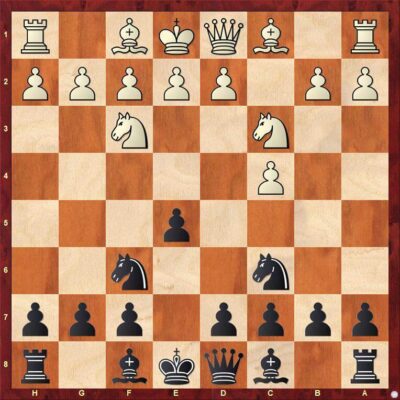
This tabiya, which I have taken the liberty to call ‘Four Knights Reversed Sicilian’, is a major crossroad for White. In recent times, strong players have relied on 4.e3.
This is the most critical attempt to get an advantage out of the opening. This makes some sense because it is probably the best way to discourage Black from playing 4…d5 while also keeping some flexibility in the center.
Historically, 4.g3 has been the most popular move when we can simply transpose into the variations discussed in 2.g3 move order (Chapters 1 to 5) with 4…d5 5.cxd5 Nxd5.
In Chapter 8, we take a look at another system designed to prevent …d5, namely: 4.e4 Bb4 5.d3 d6.
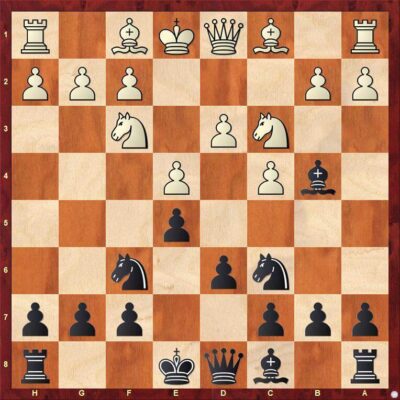
Black usually drops the bishop back to c5 and starts the fight for the important d4-square. Even though the ensuing positions are rather closed and maneuvering in nature, both sides have a couple of important pawn breaks at their disposal, which makes for an interesting strategic battle.
In Chapter 9, we discuss 4.d4.
This is a variation that shouldn’t pose Black any opening problems if he is well-prepared.
In Chapter 10, we deal with the move 4.d3 when Black can freely play 4…d5 5.cxd5 Nxd5.
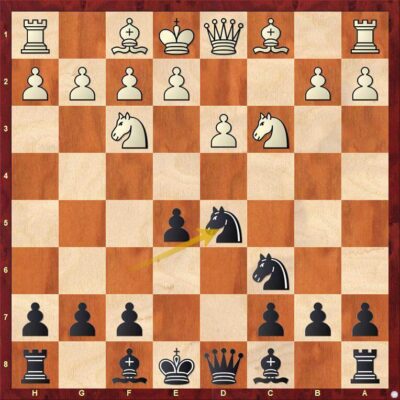
White has two major options here: to go for the Classical Sicilian/Boleslavsky setup with 6.e4 or the Scheveningen with 6.e3. In both cases, Black is doing fine if he has a good understanding of the arising positions. In Chapter 10, I explain all the must-know subtleties.
Chapter 11 features a relatively rare, but interesting move 4.a3 which takes away …Bb4 and …Bc5 options from Black, but that should not affect our plans as we can safely go 4…d5 5.cxd5 Nxd5 6.Qc2.
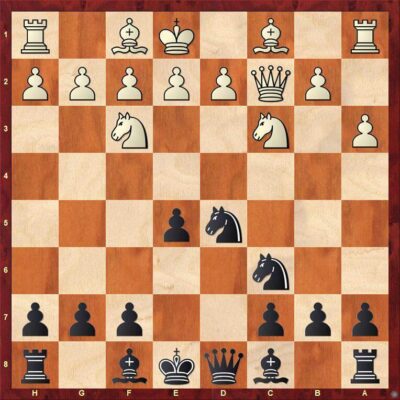
we get some sort of the Taimanov Sicilian where White is more flexible than usual since he has not played e2-e3 yet. Nevertheless, Black gets good to play with 6…Nxc3 7.bxc3 Bd6.
Let’s get back to the position after 4.e3.
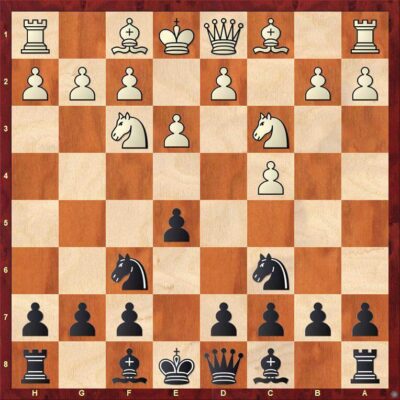
This is one of the rare cases in our repertoire where …d5 is not that promising. However, we can still try to eventually carry it out by playing in the Rossolimo style with 4…Bb4. Black’s intentions with this move are clear – he would like to exchange the c3-knight in order to improve his control over the central squares d5 and e4. White’s main reply is 5.Qc2.
In Chapter 6, we take a look at the main alternatives 5.Nd5 and 5.Qb3. In both cases, Black can play the ambitious 5…e4 We get a Rossolimo type of position in which Black’s lead in development is often a significant factor.
A very essential position arises after 5.Qc2 Bxc3 6.Qxc3 (6.bxc3 is also examined) 6…Qe7.
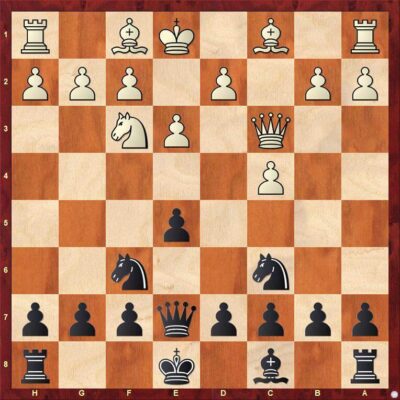
This is perhaps the most popular modern tabiya of the reversed Sicilian these days. White has tried several moves here, mainly with the idea to open the center for the bishop pair with d2-d4 under the best possible circumstances. In my view, Black doesn’t have to play along, despite the fact that he gets a solid enough position without opposing White’s plan. My suggestion is that we try to obstruct White’s idea with a combination of tactical and strategic counter-measures.
Let us see what exactly I have in mind:
Move 7.a3 is the most common move in the position. White takes control over b4-square as he prepares to push d2-d4.
Another popular move is 7.d4 neglecting the weakness of b4-square. Here, my suggestion is the relatively rare yet strategically ambitious 7…e4.
Our idea is to play a sort of the French Defence reversed after 8.Nd2 d5.
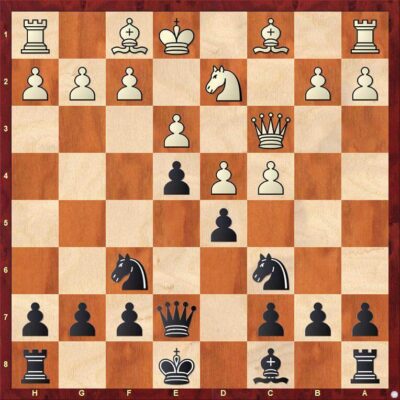
Black gets good play on the light squares and has long-term attacking prospects on the kingside. It is not easy for White to open the center since Black controls it very well with his pieces and, in some cases, with pawns (if he gets to play …c7-c6 and …f7-f5).
In the case of 7.Be2 we can simply play 7…0-0 planning to get the same kind of position as in 7.d4 line after 8.d4 e4 9.Nd2 d5, etc.
Some players like to play 7.b3 preparing to fianchetto the bishop to the long diagonal immediately. However, Black has a strong tactical retort that puts a big question mark over this plan: 7…d5 8.d4 exd4 9.Nxd4 Nxd4 10.Qxd4 c5 11.Qf4 g5!
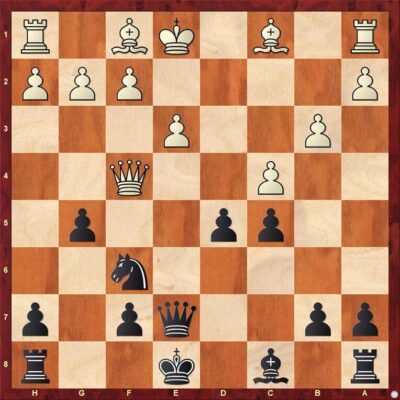
A promising gambit. Black should not shy away from active play when he has an opportunity to do so. After 7.a3, my suggestion is 7…d5 8.d4 exd4 9.Nxd4 Nxd4 10.Qxd4.
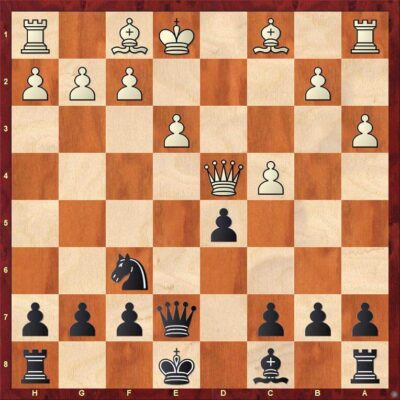
At this point, we have a couple of good continuations. Certainly, the most enterprising one is 10…c5 11.Qh4 g5.
Black employs the same gambit idea as in the 7.b3 line. My analysis shows that Black enjoys decent counterplay in all the lines.
About the Author
GM Davorin Kuljasevic [FIDE 2591]
GM Davorin Kuljasevic is a Croatian GM, who graduated from Texas Tech University and played in USCL 2007 and 2008 for Dallas Destiny, becoming US champion both years. He is an experienced coach and a winner of many tournaments: Castelfranco Veneto 2014, Split Open 2013, Mitropa Cup 2013 with the team of Croatia, Lubbock Spice Cup Spring 2011, Rijeka Open 2011, etc.
